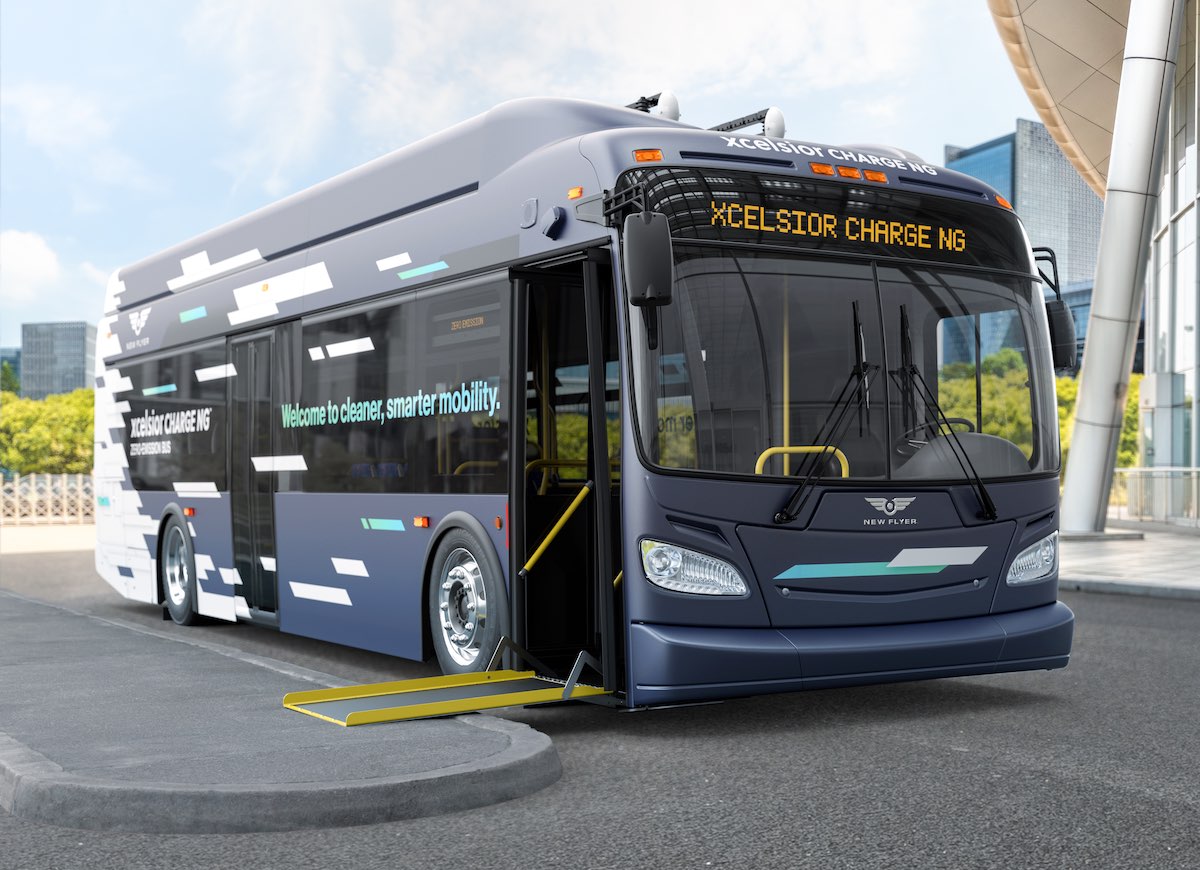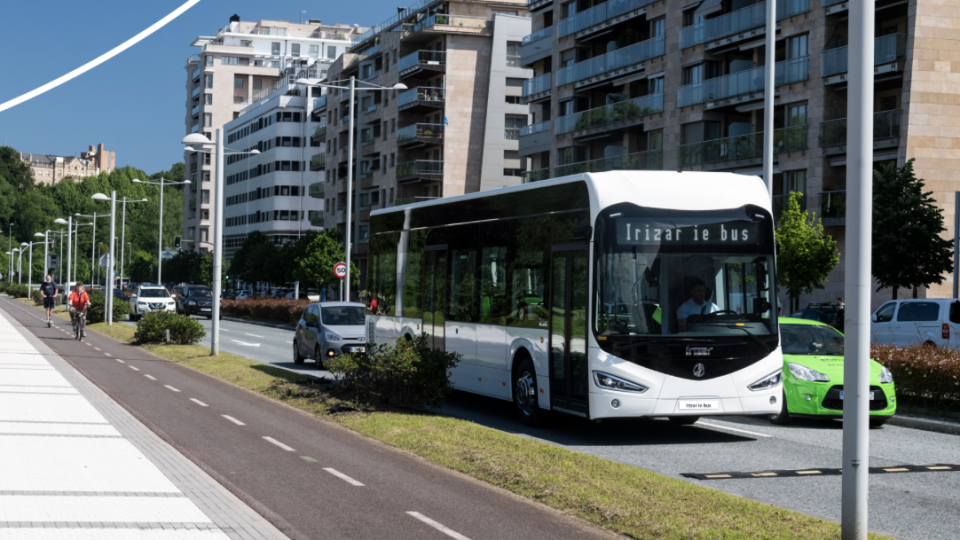New Flyer unveils its new generation electric bus range Xcelsior CHARGE NG
New Flyer unveiled today the Xcelsior CHARGE NG: a new EV bus range for mass mobility urban markets. The vehicles incorporates three distinct technology advancements to deliver a high-performance bus, including next generation high energy batteries that extend range up to 13%, advanced protective battery packaging designed for easy install and simpler serviceability, and a new lightweight […]

New Flyer unveiled today the Xcelsior CHARGE NG: a new EV bus range for mass mobility urban markets. The vehicles incorporates three distinct technology advancements to deliver a high-performance bus, including next generation high energy batteries that extend range up to 13%, advanced protective battery packaging designed for easy install and simpler serviceability, and a new lightweight electric traction drive system with up to 90% energy recovery.
Based on North America’s first low-floor transit bus introduced by New Flyer in 1991, the Xcelsior was launched in 2009, with over 16,000 delivered to date. Having surpassed 4.5 million service miles with its battery-electric Xcelsior CHARGE and fuel cell-electric Xcelsior CHARGE H2 buses, New Flyer says it has applied the best of zero-emission design, performance, research, and ingenuity to develop its newest electric bus.

Improved battery capacity for the New Flyer Xcelsior CHARGE NG
New Flyer points out that the group manufactures its own batteries in its bus production facilities. The battery packaging, developed by New Flyer, «utilizes single waterproof enclosure design and offers weight reduction and simpler maintenance, decreasing the number of parts by 90%. Its streamlined approach also allows technicians to simply “plug in” or “unplug” individual battery packs, significantly reducing bus downtime and allowing easy replacement as needed in future», New Flyer points out in a press release.
During the online presentation event, it has been stated that battery capacity is up to 440 kWh for the 35 ft version, and up to 525 kWh for 40 ft (12-meter) New Flyer Xcelsior CHARGE NG.
The Siemens ELFA 3 traction system delivers up to 90% energy recovery and weighs 69% less than ELFA 2, allowing greater passenger capacity and lending more efficient design through compact inverters and embedded drive controllers.

New Flyer Xcelsior CHARGE NG on the launching pad
“The Xcelsior CHARGE NG harnesses the best technology on the market. It includes a streamlined design that reduces maintenance, increases energy density, and improves energy recovery while significantly reducing weight – offering a lighter, more energy efficient, and longer range electric bus,” said Chris Stoddart, President, New Flyer and MCI. “As EV demand continues to build, so too has our innovation. With better manufacturability, higher energy recovery, fewer parts, and improved system durability, our Xcelsior CHARGE NG is a high-performance bus that is more sustainable and easier to maintain.”
“Millions of people count on us every day, whether for reaching their destinations or expecting the highest quality from our technology,” said Jennifer McNeill, Vice President of Public Sector Sales and Marketing. “This is why, alongside vehicle technology advancements, we have evolved our manufacturing and field services processes to ensure a safe, reliable, scalable approach to be ready for tomorrow’s growing electric bus demand today. In turn, we also enhanced training for our teams and those of transit agencies across North America; enabling EV adoption while supporting continuous workforce development to drive the new mobility era.”








